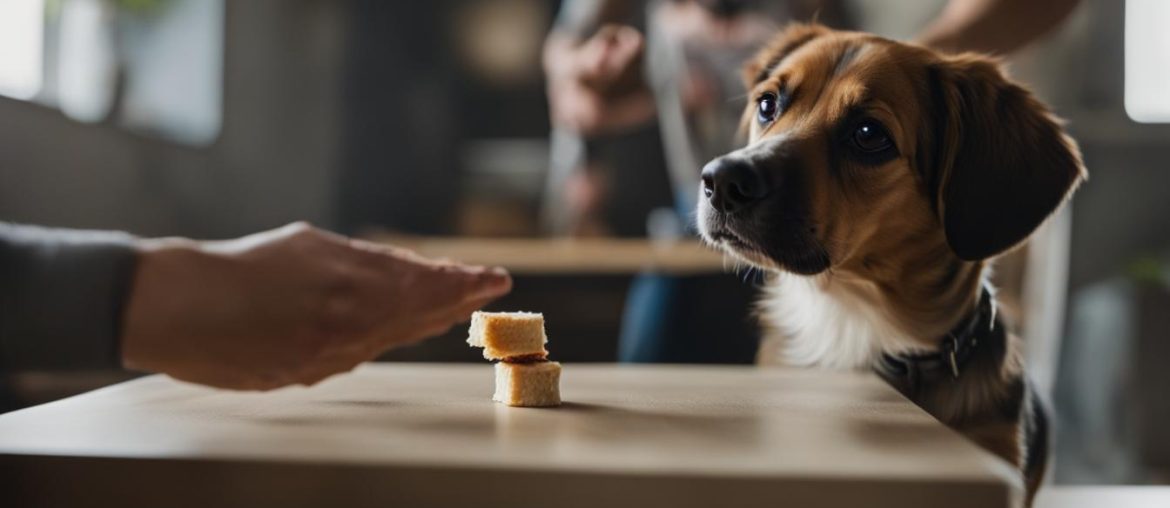Training a dog for show dog competitions involves various skills and techniques. One crucial skill that every show dog owner should master is teaching their dog to free stack. This technique involves getting your dog ready to work, teaching them to stand up, and understanding the art of hand stacking. By effectively communicating through subliminal signals and body language, you can control your dog’s movements and create a beautifully stacked show dog.
Whether you are a novice or an experienced dog handler, learning how to teach your dog to free stack is essential for success in the show ring. In this article, I will guide you through the process of training your dog to achieve the perfect free stack. From the basics of stacking to hand stacking techniques and understanding the difference between stacking and sitting, you will learn everything you need to know to prepare your show dog for competition.
Key Takeaways:
- Teaching your dog to free stack is crucial for show dog owners.
- Control your dog’s movements through subliminal signals and body language.
- Master the basics of stacking and hand stacking techniques.
- Understand the difference between stacking and sitting.
- Building confidence in your show dogs is essential for success.
The Basics of Stacking
As a dog handler, understanding the basics of stacking is crucial for show dog preparation. Stacking refers to the art of positioning your dog in a way that highlights their conformation and physical attributes. It involves getting your dog comfortable with standing up and maintaining a proper posture. By mastering the basics of stacking, you can showcase your dog’s best qualities in the show ring.
One essential aspect of stacking is observing your dog’s butt in the air. This is a natural behavior that dogs often display when they are ready to work. Rewarding this behavior helps them associate it with the stacking process. Verbal commands are not necessary in this dance of communication; instead, it relies on subliminal signals and body language.
Hand stacking plays a crucial role in positioning your dog’s feet correctly. By controlling your dog’s head, you can control their body movements. You should remember not to touch your dog’s front legs below the elbow and their back legs below the hock joint. This ensures that you maintain a light touch and only ask for more once your dog is comfortable with the head and elbow control.
| Key Points | Benefits |
|---|---|
| Observing the dog’s butt in the air | Associating stacking behavior |
| Hand stacking and controlling the dog’s head | Control over body movements |
| Avoiding touching front legs below the elbow and back legs below the hock joint | Maintaining a light touch and building comfort |
Teaching Hand Stacking
Hand stacking is a crucial component of teaching your dog to free stack. By physically placing the dog’s feet in the desired position, you can create the perfect show stack. You should remember that you control the dog’s feet by controlling her head. Using fingertip pressure, you can move the dog’s head from side to side, shifting her weight and positioning her front feet evenly.
To start hand stacking, reach over the dog with your hand and lift the elbow, placing it in the desired position. Try to maintain a light touch and only ask for more once the dog is comfortable with the head and elbow control. By gradually introducing hand stacking and rewarding the correct positioning, your dog will learn to hold the free stack for longer periods.
| Hand Stacking Tips | What to Avoid |
|---|---|
| Use fingertip pressure to control the dog’s head | Avoid touching the dog’s front legs below the elbow |
| Position the front feet evenly | Avoid touching the dog’s back legs below the hock joint |
| Gradually introduce hand stacking and reward correct positioning | Avoid applying too much pressure or force |
To put it simply, hand stacking is a skill that takes practice. Be patient and consistent in your training sessions. With time and reinforcement, your dog will learn to hold a perfect free stack, impressing judges and showcasing their conformation in the show ring.
Anchoring the Back Legs
When it comes to teaching your dog to free stack, understanding how to anchor the back legs is essential. By anchoring the back legs, you can control the movement of the front feet and achieve the desired free stacking position. This technique is a key component of dog training and show dog preparation, as it allows you to position your dog in a way that showcases their conformation.
To anchor the back legs, you can use a bait or a hand target to lure the dog’s head slowly to the left or right. The movement should be centered at the base of the dog’s tail, allowing for subtle adjustments in the position of the feet. By observing and rewarding these small movements, you can guide your dog into the correct stacking position.
I recommend that you remember that anchoring the back legs is just one part of the overall process of teaching your dog to free stack. It should be combined with other dog handling techniques, such as hand stacking, to create a well-rounded training approach. With patience and consistency, you can help your dog develop the skills and confidence needed for a successful show ring performance.
| Anchoring the Back Legs | Benefits |
|---|---|
| Control the movement of the front feet | Showcases the dog’s conformation |
| Use a bait or hand target to lure the dog’s head | Allows for subtle adjustments in foot position |
| Combine with hand stacking for a well-rounded approach | Helps develop skills and confidence for the show ring |
By mastering the technique of anchoring the back legs, you can take your dog’s free stacking abilities to the next level. Try to be patient and consistent in your training, allowing your dog to gradually learn and improve. With the right techniques and a positive training approach, you and your dog will be well-prepared for success in the show ring.
Understanding the Difference Between Stacking and Sitting
One common misconception in show dog training is the idea that teaching a dog to sit will ruin their show stack. However, you should understand that sitting and stacking are two different behaviors. Sitting is a behavior that can be corrected through training, while stacking is a behavior that should be taught and reinforced. Stacking involves getting the dog to want to stack and have a positive emotional response to it.
When training dogs for the show ring, focusing on building confidence and a love for showing in puppies is essential. Rather than correcting them for sitting or moving, you should concentrate on reinforcing the desired stacking behavior. Show stacking requires subliminal signals and body language to communicate effectively with the dog. By using positive reinforcement and creating a rewarding experience for the dog, you can encourage them to maintain the desired stack position.
Teaching a dog to stack is not just about physical positioning, but also about creating a positive and confident mindset. By building a strong foundation of trust and motivation, you can help your dog develop into a successful show dog.
To put it simply, the journey to becoming a successful show dog takes time and dedication. You should be patient and consistent in your training efforts. By understanding the difference between stacking and sitting, and focusing on building confidence in your show dog, you can set them up for success in the show ring.
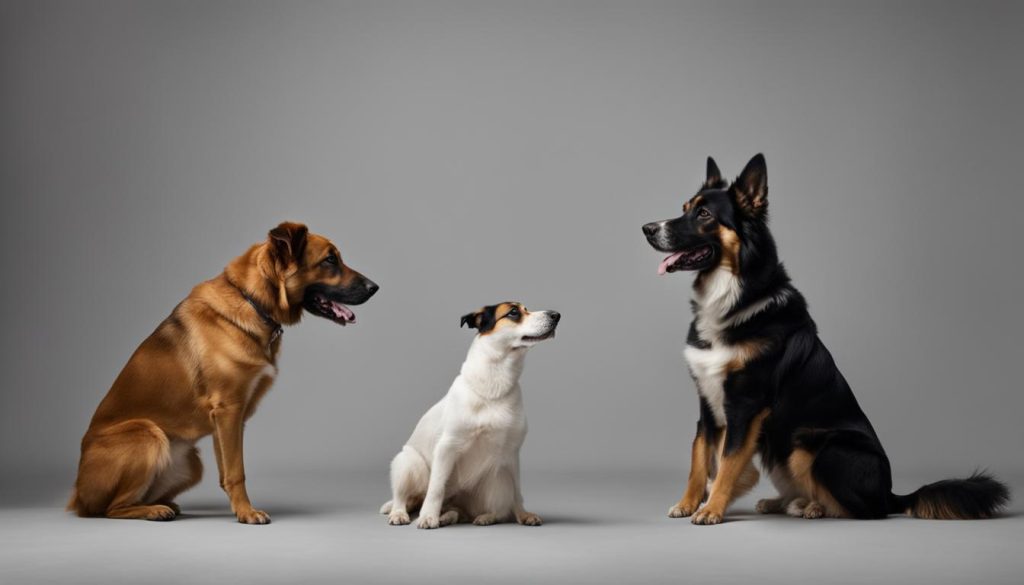
Building Confidence in Show Dogs
Building confidence is a crucial aspect of training show dogs. A confident show dog will exhibit better performance and a more positive attitude in the ring. To build confidence in your show dog, you should utilize effective dog training techniques and show dog preparation strategies. By combining patience, reinforcement, and positive training methods, you can help your show dog develop the necessary skills and mindset for success.
One way to build confidence in show dogs is to start training at a young age. Puppies can be taught basic show stack behaviors, such as standing still and trotting on a leash. By gradually introducing them to the show stack and rewarding their efforts, you can help them develop a love for showing and build their confidence in the ring.
| Benefits of Building Confidence in Show Dogs | How to Build Confidence in Show Dogs |
|---|---|
| Improved performance in the show ring | Start training at a young age |
| Positive attitude and enthusiasm | Reward and reinforce desired behaviors |
| Increased focus and attentiveness | Expose the dog to different environments |
“A confident show dog will exhibit better performance and a more positive attitude in the ring.”
Another important factor in building confidence is reinforcing desired behaviors. Rewarding your show dog for correctly executing the show stack or following commands will reinforce their positive association with showing. This positive reinforcement helps boost their confidence and encourages them to continue performing well.
Additionally, exposing your show dog to different environments can help them become more adaptable and confident. Taking them to different venues and exposing them to different sounds, smells, and distractions will help them become more comfortable and confident in unfamiliar situations.
Overall, building confidence in show dogs is a process that requires time, patience, and dedication. By utilizing effective training techniques, reinforcing desired behaviors, and exposing your show dog to new experiences, you can cultivate a confident and competitive show dog. With their newfound confidence, your show dog will be ready to shine in the show ring and demonstrate their true potential.
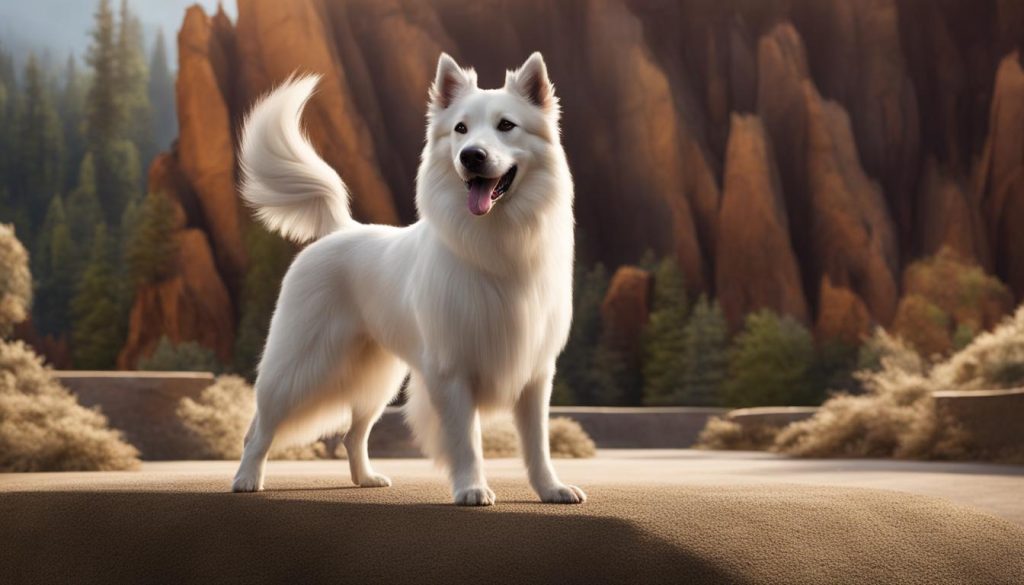
The Role of Manding in Show Stacking
Manding is a crucial aspect of show dog preparation and training, particularly in the context of the Puppy Culture program. It involves teaching puppies to sit and reach out to the handler, fostering an operant and creative behavior that contributes to a better and more reliable show stack. By incorporating manding into the training process, handlers can establish a strong communication channel with their dogs, leading to improved performance in the show ring.
The Puppy Culture program emphasizes early reinforcement and communication, helping puppies develop confidence and a love for showing. By teaching them to mand, trainers can encourage puppies to engage with their handlers actively. This interactive behavior not only enhances the bond between handler and dog but also cultivates the desired show stack behavior.
Manding is a valuable tool in show stacking as it allows for open lines of communication and encourages the puppy to be an active participant in the training process. Through manding, handlers can shape the puppy’s behavior, reinforce correct stacking positions, and ultimately create a positive association with show stacking. The Puppy Culture program’s emphasis on early reinforcement and communication sets the foundation for a successful show dog.
The Role of Manding in Show Stacking
Manding plays a crucial role in show stacking by establishing a strong line of communication between handler and dog. By incorporating manding into the training process, handlers can create a positive and collaborative environment that encourages the puppy’s active participation. Through this approach, puppies can develop the desired show stack behavior while building confidence and a love for showing.
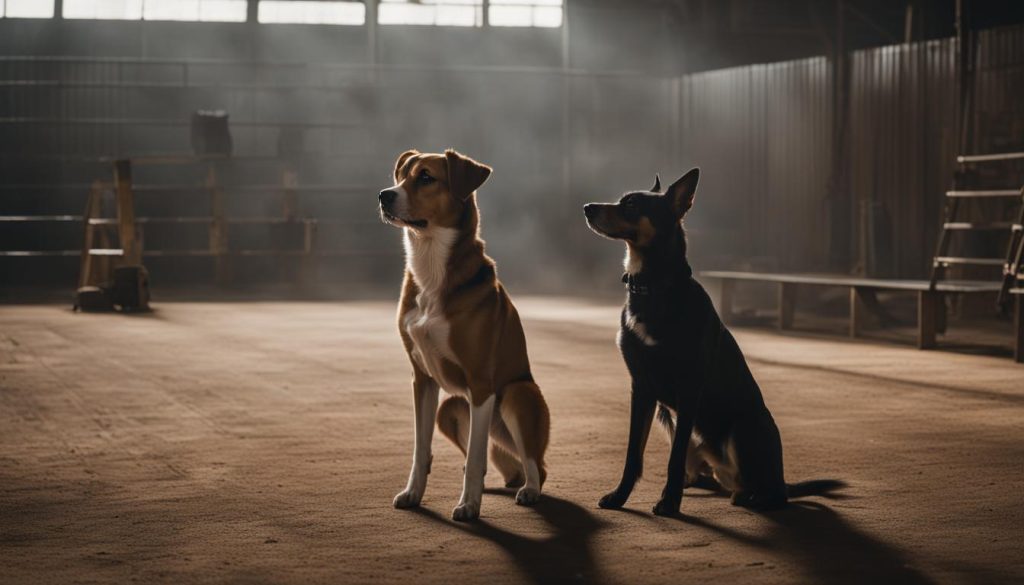
The Importance of Manding in Puppy Culture
In the Puppy Culture program, manding is considered a foundational skill for show dogs. By teaching puppies to mand, trainers can tap into their natural curiosity and willingness to engage. This leads to improved focus, operant behavior, and overall performance in the show ring. Manding fosters a positive and cooperative dynamic between handler and dog, setting the stage for success in show stacking and beyond.
Training Puppies for the Show Ring
Training puppies for the show ring requires a combination of patience, dedication, and effective dog handling techniques. Starting with hand stacking and gradually introducing the free stack is a proven approach to developing the desired show stack behavior in puppies. During training sessions, keep them short and focused, gradually increasing the duration as the puppy progresses.
Using treats and body language as cues can help guide the dog’s movements and reinforce the desired behavior. When training multiple puppies, please work with one dog at a time and create a competitive environment to motivate them. By setting clear expectations and providing consistent reinforcement, puppies can develop the muscle memory and confidence necessary for success in the show ring.
Another valuable resource for training puppies for the show ring is the Puppy Culture program. This program emphasizes early reinforcement and communication, which helps develop confidence and a love for showing in puppies. By incorporating the Puppy Culture program into training sessions, handlers can enhance their understanding of dog behavior and refine their training techniques.
| Training Tips for Puppies | Benefits of the Puppy Culture Program |
|---|---|
|
|
I’ve found that training puppies for the show ring is a rewarding journey that requires commitment and a deep understanding of dog handling techniques. By following a structured approach, starting with hand stacking and gradually advancing to the free stack, puppies can develop the behavior necessary for a successful show stack. Incorporating the Puppy Culture program into training sessions has been instrumental in building confidence and refining my training techniques. With patience and consistent reinforcement, puppies can grow into confident and competitive show dogs.
The Importance of Patience and Reinforcement
Patience and reinforcement are key elements in training your dog to free stack. Building a show dog takes time and consistency, so approach the training process with a patient mindset. Dogs, especially puppies, need time to understand and internalize the desired behaviors. Rushing or becoming frustrated can hinder their progress and hinder their confidence.
Reinforcement is another crucial aspect of training. Positive reinforcement, such as treats, praise, and play, helps to reinforce desired behaviors and motivates your dog to continue learning. By rewarding your dog for correct positioning and small improvements, you can gradually shape their behavior and build their confidence in the show ring.
“Patience is the key to success in training any dog, especially in show dog preparation. I recommend that you remember that every dog learns at their own pace, and pushing them too hard can have negative effects. By providing consistent reinforcement and allowing them to progress at their own speed, you can build a strong foundation and set them up for success.”
In addition to patience and reinforcement, it’s also important to focus on maintaining a positive and encouraging training environment. Dogs are sensitive to their handler’s emotions, so keeping the atmosphere light and enjoyable will help your dog stay engaged and excited about training sessions. Celebrate small victories and provide frequent breaks to avoid overwhelming your dog.
Benefits of Patience and Reinforcement
- Builds trust and strengthens the bond between you and your dog.
- Reduces stress and anxiety in your dog, allowing them to learn in a calm and focused state.
- Improves your dog’s confidence and overall performance in the show ring.
- Creates a positive learning experience for your dog, making them eager to participate in training sessions.
By incorporating patience and reinforcement into your dog training routine, you can create a solid foundation for your show dog’s success. Try to stay committed, be consistent, and celebrate every small achievement along the way.
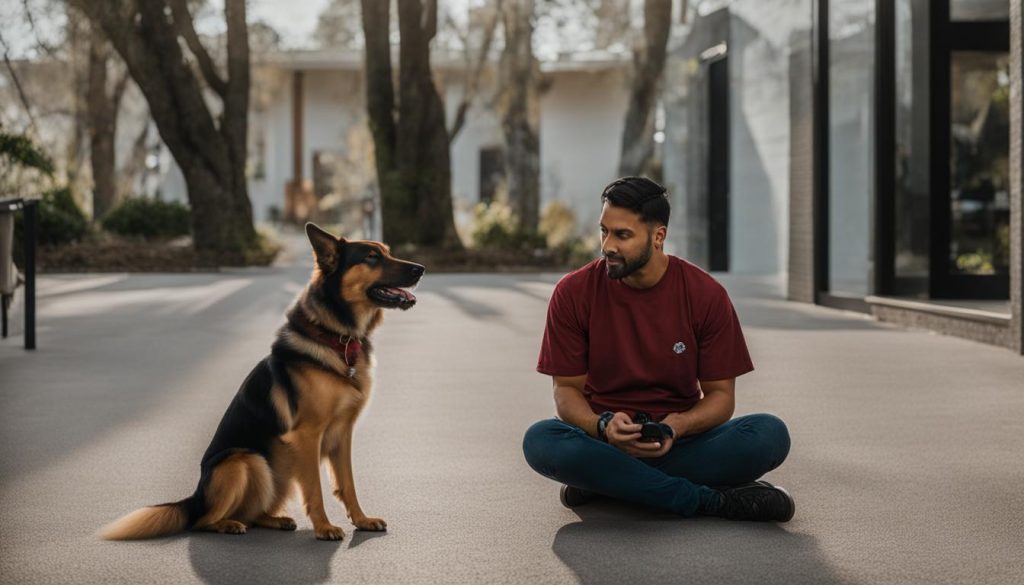
Training Puppies for the Show Ring – Live Demonstrations
Live demonstrations are invaluable tools for understanding the process of training puppies for the show ring. By observing experienced trainers in action, you can gain practical insights and learn effective techniques for teaching your show dog to free stack. These demonstrations showcase the training methods used in the Puppy Culture program, which prioritizes early reinforcement and communication to develop confident and operant show dogs.
During live demonstrations, trainers guide puppies through the various steps of show stack training, emphasizing the importance of hand stacking, controlling the dog’s head, and anchoring the back legs. By witnessing these techniques firsthand, you can better grasp the subtleties of body language, subliminal signals, and fingertip pressure that are integral to successful show dog training.
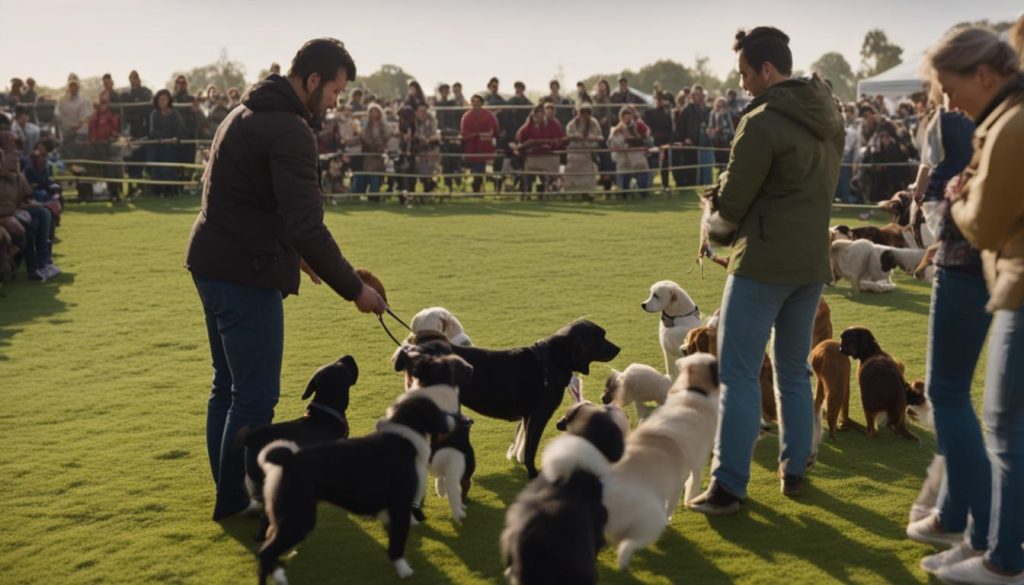
Attending live demonstrations also provides an opportunity to ask questions and seek clarification on any aspects of the training process. Trainers can share their expertise, address common challenges, and offer personalized advice based on the specific needs of your puppy. Additionally, you can observe the puppies’ responses to the training methods, helping you gain insights into how different techniques impact their behavior and performance.
By participating in live demonstrations, you can enhance your understanding of dog training, show dog preparation, and the Puppy Culture program. These events create a supportive and educational environment, allowing you to connect with fellow show dog enthusiasts, share experiences, and learn from each other. Don’t forget that training puppies for the show ring is a journey that requires time, patience, and a commitment to your puppy’s success. Live demonstrations serve as a valuable resource to guide you on this rewarding path.
“Live demonstrations are invaluable tools for understanding the process of training puppies for the show ring.”
Table: Key Benefits of Live Demonstrations
| Benefits | Description |
|---|---|
| Practical Insights | Gain firsthand knowledge of effective techniques and training methods. |
| Observational Learning | Witness experienced trainers in action and observe puppy responses. |
| Interactive Experience | Ask questions, seek clarification, and receive personalized advice. |
| Community Building | Connect with fellow show dog enthusiasts and share experiences. |
Final Thoughts
To sum it up, teaching your dog to free stack is a crucial skill for show dog owners. Through the process of getting them ready to work, teaching them to stand up, and understanding hand stacking, you can develop the desired show stack behavior.
Patience and reinforcement are key elements in training your dog for the show ring. You should remember that building a show dog takes time and consistency. By focusing on building confidence and a love for showing in puppies, rather than correcting them for sitting or moving, you can create a confident and competitive dog.
The Puppy Culture program and live demonstrations provide valuable tools and resources for training puppies. Early reinforcement and communication help puppies become focused and operant show dogs. To put it simply, the journey to becoming a successful show dog takes time and dedication, but with the right techniques and mindset, you can achieve a beautifully stacked, confident, and competitive dog.
FAQ
Is teaching a dog to free stack important for show dog owners?
Yes, teaching a dog to free stack is an essential skill for show dog owners. It is just as important as training a dog for utility tasks.
What is the process of teaching a dog to free stack?
The process involves getting the dog ready to work, teaching them to stand up, and understanding the art of hand stacking. It requires subliminal signals and body language to communicate effectively with the dog.
Why is controlling the dog’s head crucial in free stacking?
Controlling the dog’s head is crucial because it allows for controlling her body movements. You should never touch the dog’s front legs below the elbow and the back legs below the hock joint.
How do you physically place the dog’s feet in hand stacking?
You control the dog’s feet by controlling her head. Using fingertip pressure, you can move the dog’s head from side to side, shifting her weight and positioning her front feet evenly. To move the front leg, reach over the dog with your hand and lift the elbow, placing it in the desired position.
How do you anchor the dog’s back legs in free stacking?
To anchor the back legs, you can lure the dog’s head slowly to the left or right using bait or a hand target. The arc of movement should be centered at the base of the dog’s tail.
Is there a difference between stacking and sitting?
Yes, sitting and stacking are two different behaviors. Sitting can be corrected through training, while stacking should be taught and reinforced. Stacking involves getting the dog to want to stack and have a positive emotional response to it.
How do you build confidence in show dogs?
Building confidence in show dogs can be achieved through reinforcement and positive training methods. Focusing on building confidence and a love for showing in puppies is important.
What is manding and how does it relate to show stacking?
Manding is a communication behavior taught in the Puppy Culture program. It involves the puppy sitting and reaching out to the handler. Teaching manding can lead to a better and more reliable show stack.
How do you train puppies for the show ring?
Training puppies for the show ring requires patience and investment. Starting with hand stacking and gradually introducing the free stack can help puppies develop the desired show stack behavior.
What role does patience and reinforcement play in show dog training?
Patience and reinforcement are key elements in training show dogs. You should understand that building a show dog takes time and consistency.
Are live demonstrations helpful in understanding show stack training?
Yes, live demonstrations of show stack training with puppies can be helpful in understanding the training process. These demonstrations show how puppies can be trained from a young age to develop the desired show stack behavior.


